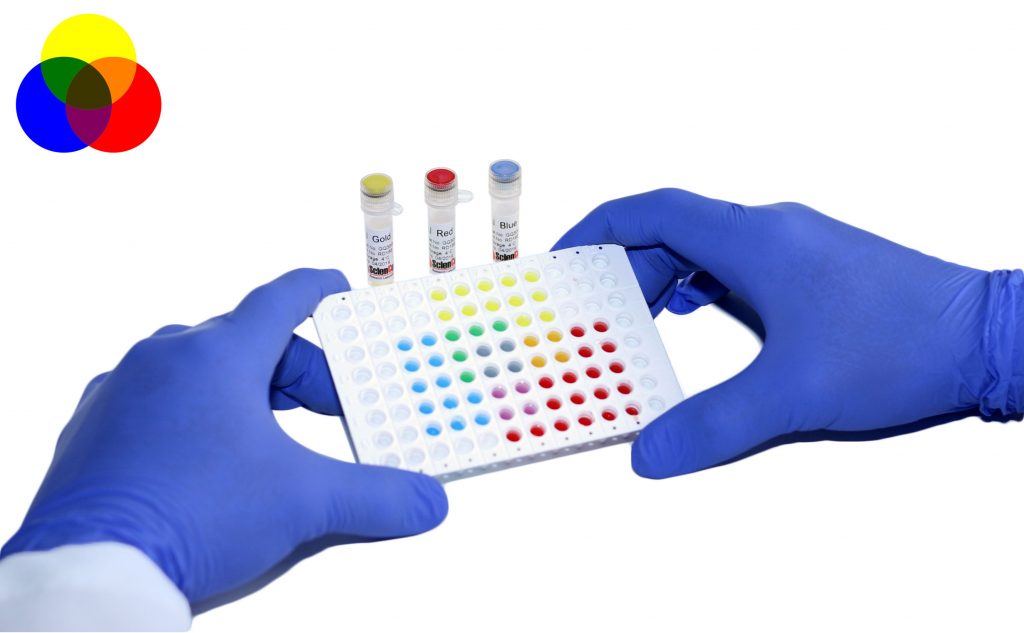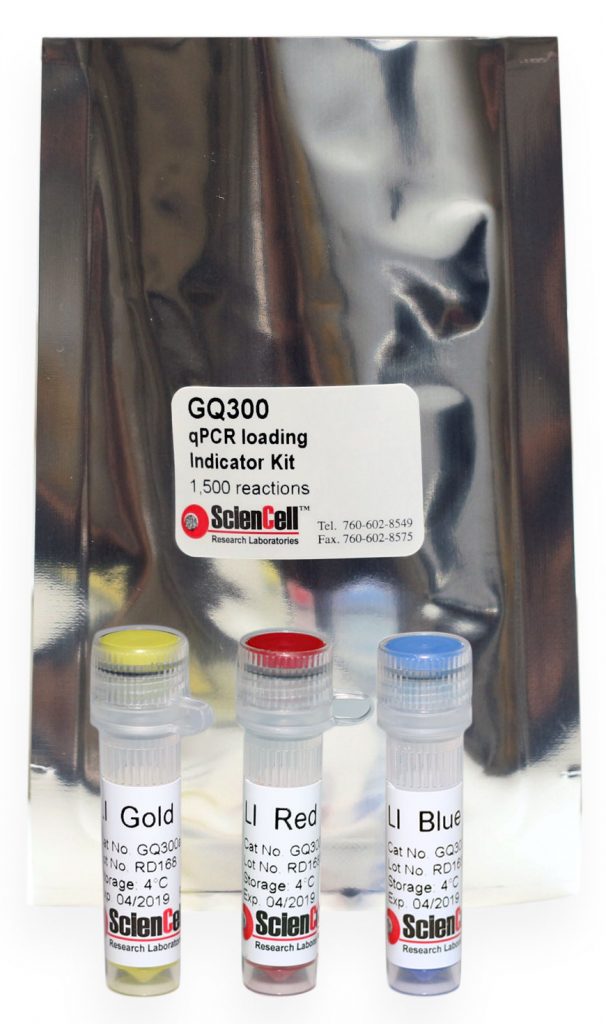qPCR is a powerful tool for quantification of gene expression levels and copy number variation. Despite the advances in next-generation sequencing (NGS), qPCR still serves as the “gold standard” for gene expression analysis. Due to poor reproducibility and vast lab-to-lab variation, all NGS data requires qPCR validation. However, as essential as qPCR is, qPCR loading can be challenging.

qPCR Loading Indicator Kit, 1,500 reactions
Why is qPCR loading difficult? First, qPCR is typically performed using 96- or 384-well plates. The replicon template, primers and master mix (consisting of polymerase, buffer and dNTPs) must be properly loaded to individual wells. The sample loading step can be challenging because of the large number of wells and it is extremely easy to introduce errors when loading. Second, when quantifying low copy number genes, white qPCR plates are preferred over transparent ones, as several studies have shown that white plates can offer better qPCR sensitivity. The opacity of a plate can affect qPCR sensitivity because the fluorescent detectors are usually located above each qPCR plate well to quantify the intensity of fluorescence emitted. If the plate wells are transparent, part of the fluorescent signal will be lost through the well wall, effectively reducing the amount of signal returning to the detector. In contrast, opaque wells can significantly reduce signal loss and maximize reflection. The opaque plate, however, makes it more difficult to know which wells have already been loaded.

qPCR Loading Indicator Kit, 1,500 reactions
To help our fellow researchers tackle this issue, ScienCell has developed a qPCR Loading Indicator Kit (LIK, Cat #GQ300) for better visualization and tracking of sample loading when performing SYBR® Green-based qPCR. For the development of this kit, we screened hundreds of dyes sothatthe absorbance of the additive dyes do not interfere with either excitation or emission wavelengths of SYBR® Green. Additionally, the additive dyes are inert so they will not affect qPCR efficiency.
LIK contains 3 inert loading indicators (LIs), LI Gold, LI Red and LI Blue, to be used in SYBR® Green or other green fluorescent dye-based qPCR reactions. LIK is designed with maximal flexibility in mind. The 3 components can be used alone or together in one qPCR reaction. They can be added to any component of a qPCR reaction to be visualized for loading. At the suggested concentrations, putting one, two or all three components into one qPCR reaction will not adversely affect qPCR specificity, qPCR efficiency, melt curve analysis results or agarose gel electrophoresis. For more product information, please visit our qPCR Loading Indicator Kit (LIK, Cat #GQ300) webpage.
